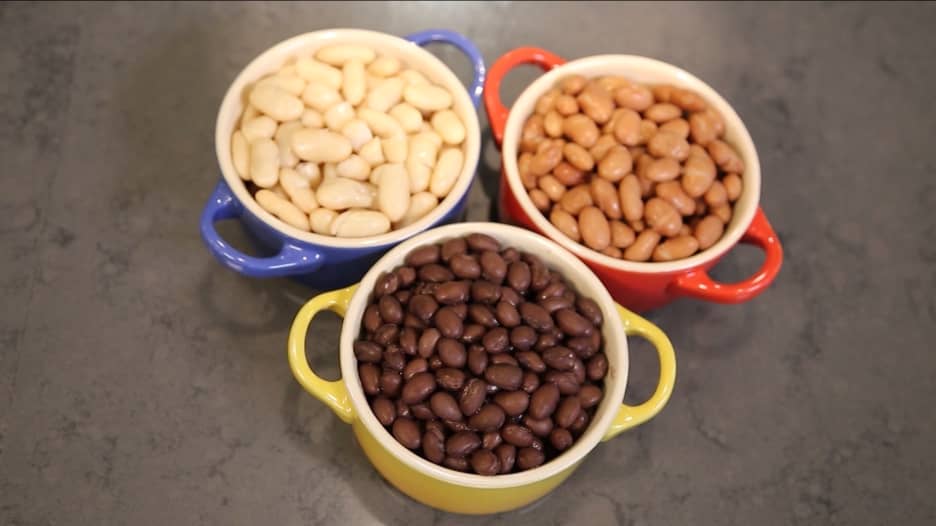دبي، الإمارات العربية المتحدة (CNN)— هل تشعر بالقلق من خطر الإصابة بالسكري من النوع الثاني؟ إذًا، يجب عليك مراقبة أنواع اللحوم التي تتناولها، وفقًا لدراسة جديدة.
يرتبط التناول المنتظم للحوم الحمراء، والمُعالَجَة منها على وجه الخصوص، بزيادة خطر الإصابة بمرض السكري من النوع الثاني، بحسب النتائج التي توصّل إليها تحليل راجع بيانات 31 مجموعة دراسية، نُشر في مجلة " The Lancet Diabetes & Endocrinology"، الثلاثاء.
وكتبت الدكتورة نيتا فوروهي، كبيرة مؤلفي الدراسة، وأستاذة صحة السكان والتغذية في جامعة كامبريدج بالمملكة المتحدة، لـCNN، أن هذه الدراسة التي توضح العلاقة بين اللحوم المصنّعة واللحوم الحمراء غير المصنّعة مع مرض السكري من النوع الثاني، تعتبر الأكثر شمولاً حتى الآن.
وبحسب المعهد الوطني للسكري، وأمراض الجهاز الهضمي والكِلى، السكري من النوع الثاني عبارة عن حالة مزمنة تحدث عندما يكون مستوى السكر في الدم مرتفعًا جدًا بشكلٍ منتظم، وهو النوع الأكثر شيوعًا من هذا المرض.
ويمكن أن يؤدي المرض إلى مشاكل تشمل أمراض القلب، والسكتات الدماغية، وأمراض الكِلى عند عدم السيطرة عليه.
وفي بيان صحفي، أفادت الدكتورة هيلدا مولروني، وهي قارئة في مجال التغذية والصحة بجامعة لندن متروبوليتان، أنّ هناك المزيد من الأسئلة التي يجب طرحها حول اللحوم، مثل المخاطر الناجمة عن الدواجن، والآثار المحتملة لطرق الطهي المختلفة.
ولكن أكدت مولروني، غير المشاركة في الدراسة. أنّ البحث الجديد يتماشى مع المبادئ التوجيهية الغذائية الحالية التي توصي بتقليل استهلاك اللحوم.
وجهة نظر عالمية
ذَكَرت مولروني أن الدراسة كانت قائمة على الملاحظة، لذا لم يتمكن الباحثون من استنتاج أن استهلاك اللحوم شكّل السبب المباشر لمرض السكري.
لكن الصلة كانت قوية، كما قالت فوروهي، التي أشارت إلى أن "هذه النتائج كانت عامة بين السكان في مناطق وبلدان مختلفة من العالم".
وقام الباحثون بتحليل بيانات مليوني شخص تقريبًا في 20 دولة.
كما أخذ الفريق بعين الاعتبار عوامل تشمل "جودة النظام الغذائي، والنشاط البدني، والتدخين، واستهلاك الكحول، ومدخول الطاقة، ومؤشر كتلة الجسم التي قد تؤثر على النتائج، وقد تؤدي إلى تضخيم أو إخفاء العلاقة بين اللحوم ومرض السكري من النوع الثاني".
وأشار الدكتور دوين ميلور، اختصاصي التغذية، والمتحدث باسم جمعية التغذية البريطانية، والزميل الأكاديمي الفخري في جامعة أستون بالمملكة المتحدة، إلى أنه البيانات لا تسمح للباحثين بأخذ عوامل أخرى قد تساهم في الإصابة بمرض السكري من النوع الثاني بعين الاعتبار، ضمنًا تاريخ العائلة، ومقاومة الأنسولين، ومحيط الخصر.
وأوضح ميلور، غير المشارك في البحث: "من الممكن أن يكون الخطر المتزايد المرتبط بتناول اللحوم المصنعة والحمراء نتيجة لهذه العوامل المُربِكة الأخرى".
التقليل من اللحوم وزيادة استهلاك النباتات
وأشارت مولروني إلى أنه رُغم هذه القيود، إلا أنّ الأدلة الواردة في الدراسة الجديدة والتوصيات الغذائية الحالية تقدم حجة قوية للتقليل من تناول اللحوم.
وأوضحت مولروني: "استهلاك اللحوم بشكل عام يتجاوز (ما توصي بها) التوجيهات الغذائية"، ومن ثم أضافت: "توصي الإرشادات الغذائية الحالية أيضًا باستبدال اللحوم الحمراء والمصنعة بلحوم مثل الدواجن، بالإضافة إلى تقليل استهلاك اللحوم بشكلٍ عام باستخدام بدائل مثل البازلاء، والفاصوليا، والعدس، والتوفو".
كما ذكرت مولروني أنّه رُغم عدم وجود أبحاث واضحة حتى الآن حول إذا كان ثمة ترابط بين استهلاك الدواجن ومخاطر الإصابة بالسكري من النوع الثاني، إلا أن الدراسة الأخيرة أظهرت أن استبدال اللحوم الحمراء واللحوم المصنعة بالدواجن أدى إلى انخفاض خطر الإصابة بالسكري من النوع الثاني.
وأكّد ميلور أنه بالإضافة إلى السعي إلى اتباع نظام غذائي غني بالخضار، والفاكهة، والمكسّرات، والفاصولياء، يجب أيضًا التأكد من ممارسة التمارين الرياضية بانتظام.







